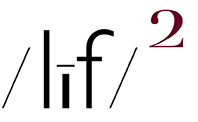cover illustration ~ Executive Report magazine (embiggenable)
illustration for article about the University of Pittsburgh School of Dental Medicine ~ (embiggenable)
”....it's been quite some time since I read an artist speak so eloquently and clearly about the world beyond his/(her) own asshole.” ~ Bill Jay
Re: speaking beyond of his(her) own asshole:
In my project “Far From” I want to make visible what landscape photography can look like for a female photographer with child rearing responsibilities. I combine landscape photographs of the American West with embroidery to challenge the masculinity of traditional landscape photography and the myth of the West. Landscape photography was traditionally dominated by male photographers as it was deemed unsafe and impractical for women who were constrained to the domestic sphere, close to their housekeeping and child rearing duties …. I am drawing on the history of embroidery as both a symbol of female submission and a weapon of resistance for women, and overlaying that to the masculinity of landscape photography and the American West.
AS I HAVE WRITTEN MANY TIMES, I HAVE LITTLE, if any regard for the photographs made by adherents to the Academic Lunatic Fringe crowd, i.e., those whose picture making is driven by obsessive narcissistic navel gazing, and the like. The navel gazing is most often about attempting to make a photograph that expresses some deep personal angst, emotional distress, obsession with a social cause and the like.
If that’s your picture making thing, have at it. However, iMo, the resultant photographs fail on 2 counts; a) they are not very interesting / pleasing to look at, and, b) they require a zillion word artspeak essay that attempts to explain what it is that the viewer is looking at.
The narcissistic navel gazing artist statement example in this entry is a case in point. Right from the get-go it states that the photographer had a desire to make visible what landscape photography can look like for a female photographer with child rearing responsibilities. Say what? I mean, does a female photographer with child rearing responsibilities make photographs that differ from those made by a female photographer with business responsibilities. How about a female photographer with commercial aviation responsibilities, or…. etc. etc. etc.?
And I won’t even get started, re: the masculinity of traditional landscape photography or the wacky idea of embroidery as both a symbol of female submission and a weapon of resistance for women. But, then again, say what? Can anyone find me a woman who was deterred from making landscape photos cuz the genre was dominated by male photographers and subsequently decided to take up embroidery as a weapon against…what?…misogyny? Somehow I have a problem with envisioning a group of angry female wanna-be landscape photographers, now “constrained” to embroidery, confronting a group of male landscape photographers while holding up their work efforts and screaming, “Take that you bastards!”
I could go on but I won’t. Let me just write that this example of artspeak-driven, narcissistic navel gazing, ALF folderol is spot-on typical of the ALF genre. iMo, their #1 problem is that they are attempting to photograph something–an idea–that can not be photographed. However…
…. do not misunderstand my rant. I am not suggesting that a visual element in a photograph, or an the entirety of a photograph can not have a symbolic meaning, I offer as evidence my photo-based illustrations in this entry. The assignment for a magazine cover was to create a picture for an issue about the revitalization of the Pittsburgh “rustbelt”–a term referring to a region in the United States that experienced a major decline in manufacturing and industrial activity in the late 20th century, resulting in economic hardship, job losses and where industries like steel, coal, and automotive production were once dominant.
I don’t think that it requires a PHD in art / photography studies to figure out that, under the cover heading of “Revitalizing the Rustbelt”, the rusted iron objects were symbolic devices, that the wilted flowers represent the demise of the steel industry, that the drawn lines and angles suggest something other than heavy industrial occupations, and that it was not an ad for new home accessories outlet.
The non-literal dental image assignment was made in an effort to suggest / imply the idea of “dental” in a more visually captivating manner than a “straight” photograph would be.
FYI, the Rustbelt photo-based image is a Polaroid Image Transfer on fine art non-photographic paper. Some hand coloring was added–primarily on the flowers–along with the ink-drawn lines and arrows.
The Dental photo-based illustration is an SX70 film, manipulated emulsion image.
